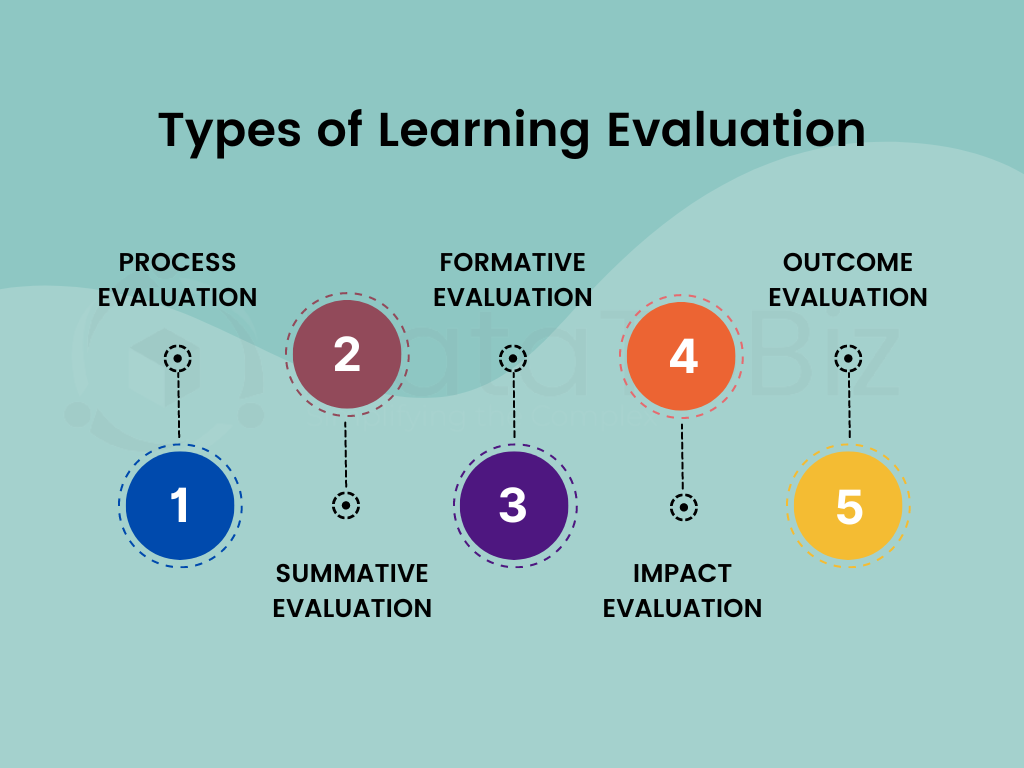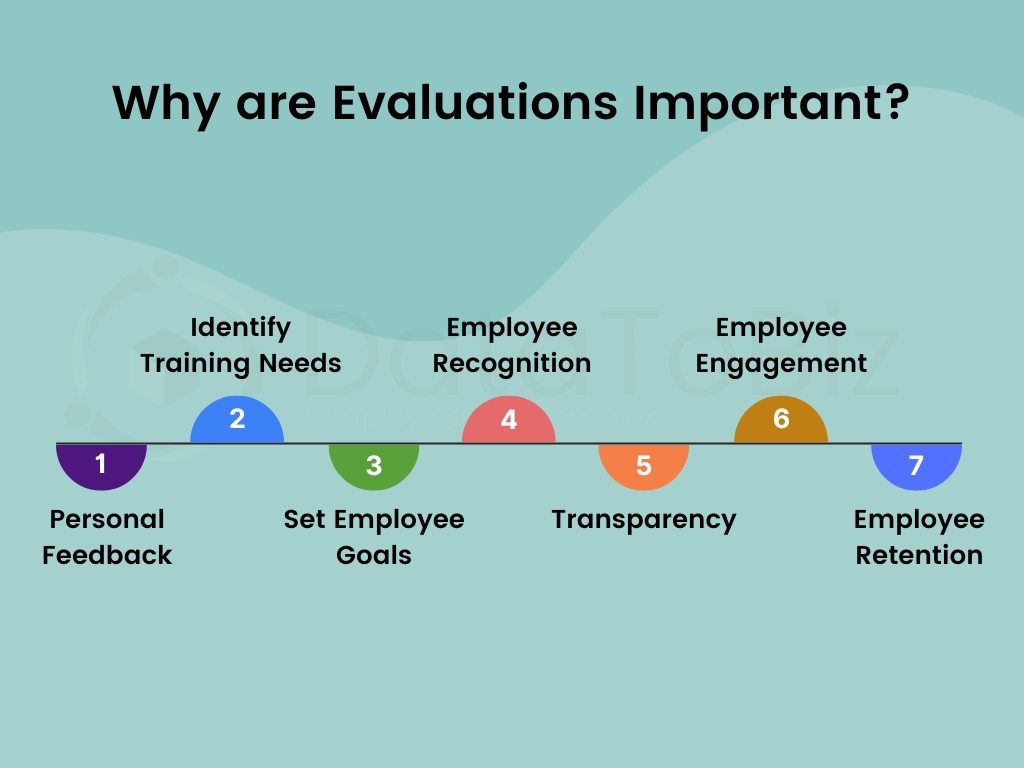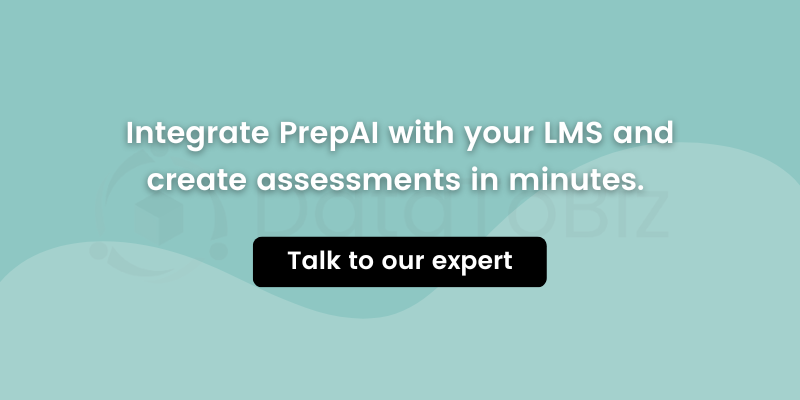Learning evaluation models are a great way to align your training programs with business strategies. Make sure that your employees get the right training at the right time for the given project. We’ll discuss the importance of learning goals and evaluation models that can improve overall performance.
Learning is an integral part of our lives. Our learning continues from childhood to old age and takes different forms. Students learn at educational institutions, and employees learn at work. Training is a subset of learning and a standard procedure in most organizations. Workplace learning has changed over the years. It is no longer a one-time process. Enterprises are creating long-term and continuous learning systems to provide support to employees and increase their productivity.
Workplace learning improves employees’ skills, knowledge, performance, and productivity. A consistent and powerful learning model can bring great success to the enterprise. However, this is possible when you choose the correct learning model. So how do you know if your decision is good for the business? Is there a way to evaluate learning models and their processes?
Yes. There are around twelve learning evaluation models that determine whether your procedures are successful or not. In this blog, we’ll read in detail about the importance of setting learning goals, understand the types, and know more about the learning evaluation models.
What is a Learning Model?
Before we discuss learning evaluation models, let’s look at the definition of a learning model. A learning model is a framework used to acquire new knowledge and skills or improve existing abilities. This can be achieved by reading source material, listening to lectures, watching tutorials and webinars, participating in discussions, making notes, etc. Given our diverse human nature, it’s understandable that every person can have a different learning model.
Generally speaking, learning models are classified broadly into visual, kinesthetic, and auditory. Over the years, these were expanded and divided into more learning models based on cognitive skills, behavior, skills, etc. In short, the learning models have evolved to cover most learning preferences seen in today’s world. These can be adopted by students as well as professionals.
Why Learning Goals are Important
Learning goals are specific and measurable abilities/ qualities you want your employees to display at work. These can be implicit or explicit, small, medium, or large. But what are learning goals important?
Learning goals are a quantifiable measure of employees’ skills and knowledge. These help you determine if the existing skills are enough to achieve your targets or if the employees learning additional training. You can understand whether the employee skills and training programs are aligned with the business vision or not. These will help you create a comprehensive learning model in the enterprise and get better results.
Almost 95% of employees say they will stay longer with an organization if it provided training. Around 75% of employees feel that improper or lack of training at work prevents them from being fully productive and delivering their best. Learning goals play a vital role in the training evaluation process as they are used as KPIs or benchmarks to measure employees’ knowledge.
Learning goals are important because:
- You can address the weaknesses and talent gap in the organization
- You create a transparent and consistent model to promote employee learning
- It enhances employee satisfaction when they see the efforts the employer puts into developing learning programs
- It increases employee performance and retention rate
- It increases overall business productivity and gives an edge over competitors in the industry
Which Learning Objective Is Measurable?
A measurable learning goal is quantifiable. For example, product development objectives can be measured based on the success of the released product, feedback from end-users, market share, and so on.
Similarly, marketing and sales-based learning objectives are measurable since you can determine these by calculating the conversion ratio of leads to customers, the increase in sales compared to previous years, and the returns from the latest promotional campaigns.
HR and training-based objectives are crucial as these are the ones that determine employee performance in the enterprise. If employee performance and satisfaction have increased by the end of the year, it implies that your learning models are successful.
Types of Learning Evaluation
The following are different types of learning evaluations that give the management more information about the training programs/ learning methods used in the business.

Process Evaluation: This focuses on how well the training programs have been implemented and whether they align with the business strategies.
Summative Evaluation: This is conducted after the training program is complete to determine if it has been successful.
Formative Evaluation: The training program is evaluated during its development stage to iron out any issues and make the program more effective.
Impact Evaluation: This one deals with the long-term impact of training on employee performance, retention, business productivity, etc.
Outcome Evaluation: This type deals with how the learning models have changed employee attitudes, behaviors, knowledge, etc., and how this impacted your business.
The various tests and quizzes conducted by trainers using assessment tools come under learning evaluation examples. Be it a quiz at the end of each module or the gamification of learning, these help evaluate employee knowledge based on different parameters.
Learning Evaluation Methods
One of the major issues with developing and continuing learning models in an enterprise is the cost of the program and the return on investment you get. When you measure a learning model against business KPIs, it gives a clear picture of what’s working and what’s not.
However, this evaluation is tricky as it has to be measurable and contain demonstrable data. That’s why you need to use an approved learning evaluation method to get in-depth insights.
Check out the top six learning evaluation models below.
1. Kirkpatrick Model of Evaluation
This is an old learning evaluation model developed by Dr. Donald Kirkpatrick in the 1950s. It is commonly used by many organizations, though it has a few limitations. The model divides learning evaluation into four levels-
- Reaction/ Satisfaction: What is the learner’s reaction to the program? Are they satisfied with it?
- Learning: Measure the learning outcome to determine how much has been retained by the learner.
- Impact/ Behavior: The impact of the program is determined by measuring learners’ behavior to see if they are applying the newly learned skills at work.
- Results: This deals with how the learning program and the learner’s new behavior affect the organization at the macro level.
You should measure all four levels to identify where the problem lies and how you can overcome it. Missing or ignoring even one level leads to incomplete and incorrect analysis. This can affect your learning models and ROI. Furthermore, Kirkpatrick model of learning evaluation continuous process and not a one-time event.
2. Kirkpatrick-Phillips Model
An extension of Kirkpatrick’s model, this model takes into account a number of factors. Jack Phillips added ROI to the levels to make the learning evaluation model more comprehensive for business organizations. The idea is that the L&D departments should pay attention to ROI instead of focusing on cost savings, thus affecting the quality of the training programs.
However, the limitation of using this model is that the calculation can be done only after the training is complete. You will know the ROI after you spend money on training and not before. Furthermore, setting a low-cost learning intervention against a greater project cost can result in skewed impressions. The ROI should be calculated only in certain conditions, like when the training program is expensive or if the strategy/ job profile is vital for the top management.
3. Anderson’s Value of Learning Model
This is one of the recent learning evaluation models published in 2006. It is a three-stage model that deals with two primary challenges- value challenge and evaluation challenge.
The learning model emphasizes the importance of aligning learning program goals with business strategic goals so that you get accurate analysis from evaluating the programs. This model has three stages:
- What is the current alignment of the learning programs with strategies?
- Using ROI, ROE, learning function, and benchmarking to evaluate the training results.
- Determining and establishing relevant learning programs/ approaches. This helps to bridge the gap between the learning programs and business strategies to get the desired results.
However, Anderson model of learning evaluation, is not enough on its own. It only provides the effectiveness of the learning programs on the macro levels. You have to rely on other learning evaluation models to find out the efficiency of a single training program. That said, Anderson’s Value of Learning Model will give you the right metrics required to plan the training programs and achieve business goals.
4. Brinkerhoff’s Success Case Method
Rob Brinkerhoff developed the Success Case Method to compare the most and least successful learning programs in an organization. Success is determined in terms of low investment costs and high returns. An advantage of SCM is that it can be for various variables and is not limited to evaluating training programs.
That said can be used as a one-time evaluation method but not as the only method for learning evaluation. Similar to the previous model, the Success Case Method cannot be used independently and needs to be supported by other methods. Yet, SCM can give you the necessary details to understand what you should retain and what to change so that the learning programs are more effective.
5. Kaufman’s Model of Learning Evaluation
Kaufman’s model of learning evaluation is based on Kirkpatrick’s model we listed at the top. Kaufman made two significant changes to the model by dividing the first level into two- input and process. The second change he made is the addition of a fifth level after organizational benefits. He included a fifth level that looks at the benefits of the learning program for the clients or society.
Besides that, another perk of the Kaufman’s model of learning evaluation is that it allows you to evaluate learning programs individually instead of grouping them. This way, you can identify the programs that are not up to the mark and take the necessary action to improve overall effectiveness.
Some businesses don’t use the fifth level of evaluation, but it could give you a better picture. For example, it helps determine if the training for customer service teams has made them more efficient at work by measuring customer satisfaction levels before and after the training.
6. Learning Transfer Evaluation Model
LTEM (Learning Transfer Evaluation Model) is one of the modern types of learning evaluation developed by Will Thalheimer in 2018. It is an alternative option to Kirkpatrick’s model. Thalheimer said that his model provides more guideposts that help create better cycles of improvement.
This model has the following eight levels.
- Employee/ learner participation in the training programs is measured (though this is not a sign of learning, it is still a necessary metric)
- The learning activity is divided into three sub-levels- attention, interest, & participation (however, the levels are correlated)
- The learners’ perspectives of the training program are recorded (which may not always align with the results)
- The learners’ knowledge is tested based on their recalling and retention capabilities (AI question generator tools like PrepAI are used to create automated question papers in bulk)
- The decision-making abilities of the learner are tested by providing real-life simulations (the decision-making skills should remain even if a portion of the knowledge gained is lost over time)
- The learners’ decision-making skills are combined with their ability to convert plans into action and deliver the results (here, you understand if further training can improve performance)
- The learners’ ability to transfer the knowledge to work is measured (the correlation between workplace environment and learners’ skills is also considered)
- The last level deals with how the learners’ new learning is transferred to others around them (colleagues, clients, family, etc.) and if the learner has leadership skills (both positive and negative effects are measured)
7. Bloom’s Taxonomy Learning Model
Bloom’s Taxonomy learning and evaluation model was developed by Benjamin Bloom, an educational psychologist, in 1956. His idea was to categorize learning objectives in a hierarchy based on their complexity. The framework was revised in 2001 to adapt it to contemporary times for teaching and assessments. The framework is also used by some AI-powered assessment and learning evaluation tools like PrepAI to generate questions that test lower-order and higher-order thinking skills (HOTS).
The six levels of Bloom’s Taxonomy learning evaluation model are as follows:
Knowledge/ Remember: This is at the bottom of the hierarchy and focuses on gaining the required knowledge and remembering the theory.
Comprehension/Understanding: The second step is the ability to understand the knowledge gained instead of memorizing it by rote.
Application: The third level is where the newly gained knowledge is applied to solve/ work on real-life scenarios and get the desired outcome.
Analysis: The fourth level and upward are called higher-order thinking skills. Analysis is the ability to look at a piece of information from more than one perspective.
Synthesis/ Evaluate: At the fifth level, the candidates are expected to evaluate or assess the given topic to come up with their theories/ ideas.
Create: The topmost level of the hierarchy is the ability to create something new based on the knowledge gained in the previous levels.
8. The ADDIE Model
The ADDIE model stands for analysis, design, development, implementation, and evaluation. It was created by the US Army in the 1970s to structure its training programs. Over time, ADDIE was adopted by businesses and other institutions that provide training to students and professionals. In fact, it is also the foundation for over a hundred learning evaluation methods developed by different people.
Analysis: Here, the organization analyzes the training needs to understand what employees expect from the course based on the existing skill gap.
Design: The training program, modules, and course materials are designed based on the insights derived from the previous analysis.
Development: The required assets and materials (LMS, assessment tools, infrastructure, etc.) are collected to create/ develop the setup to start employee training.
Implementation: The training program is implemented to achieve the required learning outcome. This stage requires proper planning to align the course with the business objectives.
Evaluation: Feedback is collected from employees to evaluate if the training program has been successful and how to make it better.
9. The Socratic Method
The Socratic Method is a learning evaluation model that stimulates critical thinking through questioning. It is named after the Greek philosopher Socrates who believed in questioning as a path to pursue truth. Dialogue is integral to this learning evaluation model as questions are asked during a conversation to create a back-and-forth discussion/ exchange of ideas and opinions to arrive at the final/ ultimate truth.
Naturally, the model follows the same format but in an altered approach. It is divided into five levels and has five key features listed below.
Questioning: Instead of teaching facts, this method encourages questioning as a way to gain new knowledge (the questions have to make sense and help uncover new ideas).
Dialogue: In this step, learning happens through a dialogue or a lengthy conversation instead of a lecture. Both parties are equally involved in the process and communicate.
Critical Thinking: In this stage, the data gathered until now is analyzed using critical thinking to gain more perspectives on the topic.
Cooperative Learning: Here, the parties involved cooperate, coordinate, and collaborate with each other to share knowledge and improve their abilities.
Inductive Reasoning: This stage deals with the use of reasoning, implications, correlations, and connections to understand the concept.
10. Maslow’s Hierarchy of Needs
Maslow’s hierarchy of needs was developed by Abraham Maslow in 1943 and presented in a paper titled A Theory of Human Motivation. This pyramid hierarchy has five levels whereas the lower four levels deal with psychological needs. The final and topmost level is a growth need, which can be achieved after the four lower needs are satisfied. Maslow’s hierarchy is one of the learning and development evaluation models that prioritize the psychological aspects and help understand what drives people to gain new knowledge and how this can be used to help them achieve their goals.
The five levels of the pyramid are as follows:
Physiological: Needs like hunger, thirst, sleep, breathing, etc., are considered.
Safety: Needs like physical, financial, and emotional safety (housing, health, employment, etc.) are considered.
Belongingness: Emotional needs like love, affection, empathy, family, friendship, etc., are considered.
Esteem: Here, social needs like status, confidence, self-esteem, success, etc., are considered.
Self-actualization: The final growth stage is about self-actualization which deals with ethics, morality, creativity, problem-solving, etc.
Why are Evaluations Important?
Evaluations give you detailed information about the positives and negatives of the learning program and its impact on employees. You can get insights at the individual, team, department, and organizational levels. Consequently, you can make better decisions for the future and correct the mistakes in your processes. It is obvious that the ultimate goal of any business is to expand in the market and become an industry leader to reap good returns.

- Personal Feedback
- Identify Training Needs
- Set Employee Goals
- Employee Recognition
- Transparency
- Employee Engagement
- Employee Retention
Conclusion
Using learning evaluation models can give your business a lot of benefits in the short term and long term. However, there’s no correct model to choose. A combination of models usually works the best and provides a complete picture of the learning processes in your enterprise.
As you can see, employee evaluation is an integral part of the process. You need to know how much the employees have learned from the training. It can be easily done through assessments. PrepAI is an AI question generator that can be integrated with your existing LMS. Create assessments through automation and get faster results to derive in-depth insights about your learning processes. Talk to our team to access PrepAI API documentation.

 Test Conducting feature is now live. You can now conduct tests from your generated question papers.
Test Conducting feature is now live. You can now conduct tests from your generated question papers.




